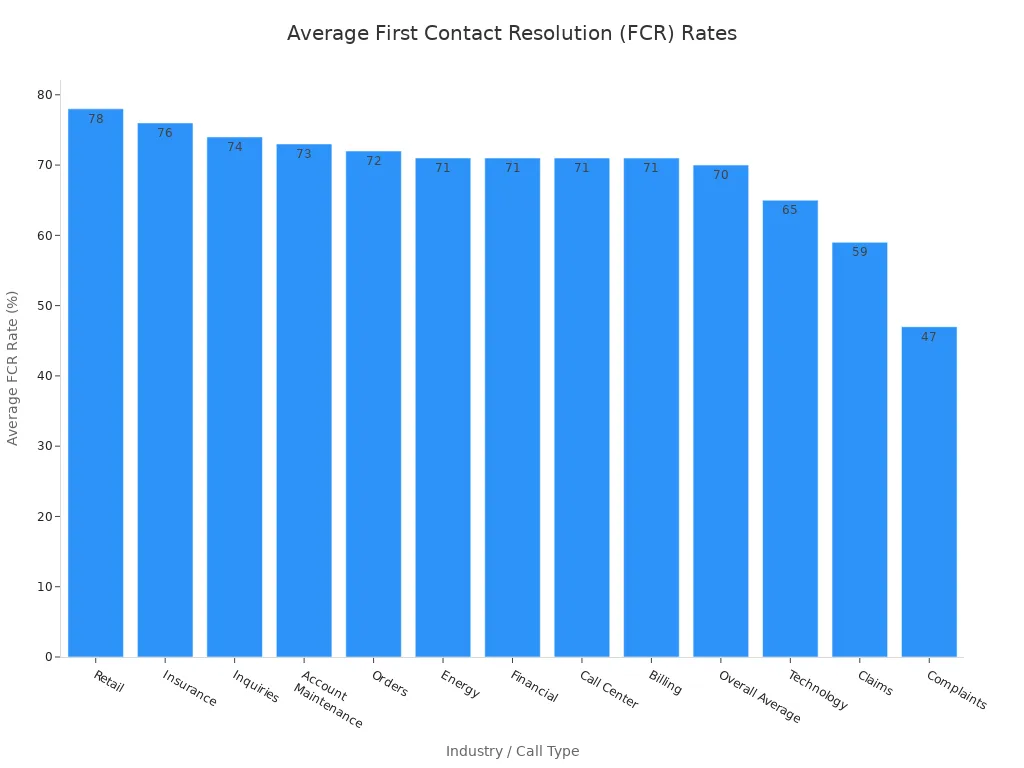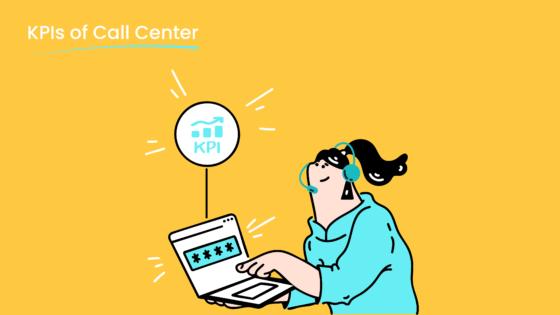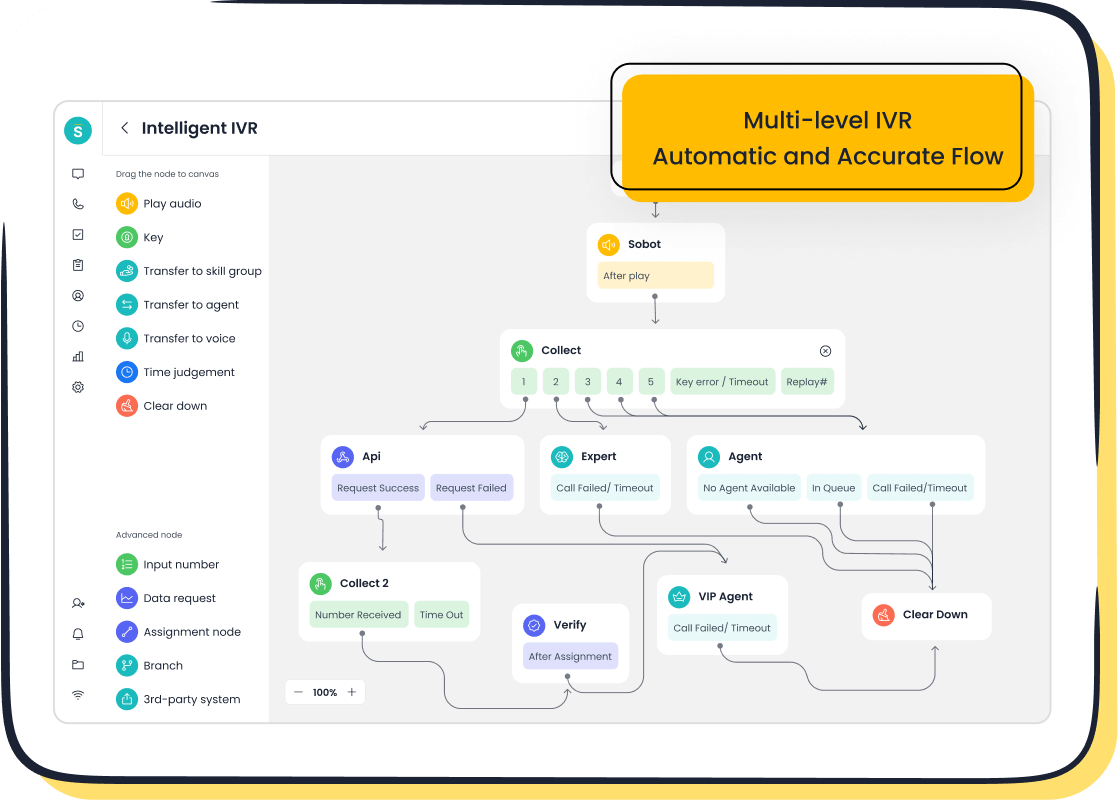Customer Service Operations vs Support

Many people use the terms customer service and customer support interchangeably. However, they are distinct functions. Customer service is the proactive strategy shaping the entire customer experience. Customer support is the reactive team that helps customers solve specific problems. A great customer service experience builds loyalty over time.
Think of it this way: Customer service is the friendly hotel concierge ensuring a pleasant stay, while customer support is the skilled mechanic fixing your car.
Effective customer service operations use tools like the Sobot call center, powered by Sobot AI, to help the teams at Sobot deliver both functions seamlessly.
Defining Customer Service: The Proactive Relationship
Customer service is the company-wide effort to create a positive customer experience at every touchpoint. Unlike customer support, which reacts to problems, customer service proactively builds and nurtures relationships. This approach aims to make customers feel valued throughout their entire journey with a brand. Effective customer service operations turn one-time buyers into lifelong fans.
The Core Goal: Fostering Loyalty
The primary goal of exceptional customer service is to foster deep-seated customer loyalty. A business achieves this by anticipating needs and consistently exceeding expectations. When companies are proactive, they see significant gains across the board. Proactive customer service can boost brand loyalty by as much as 30%.

Scope: The Entire Customer Journey
Exceptional customer service spans the entire customer journey. It begins before a sale is ever made and continues long after. For example, H&M's app sends proactive notifications about sales and new items. This strategy increased app engagement by 20%. It shows how customer service can engage customers at different stages, making their experience seamless and enjoyable.
Key Metrics for Success
Teams measure the success of customer service with relationship-focused metrics. These numbers show how customers feel about the company over time.
- Net Promoter Score (NPS): This metric asks customers how likely they are to recommend the company. It measures overall loyalty.
- Customer Satisfaction (CSAT): This score measures happiness with a specific interaction. A good CSAT score is often above 90%. It provides immediate customer feedback.
- Customer Lifetime Value (CLV): This metric predicts the total revenue a business can expect from a single customer. Great customer service directly increases CLV. Studies show that 87% of customers change their buying behavior after a positive experience, with many purchasing more products.
Essential Skills: Empathy and Communication
Strong customer service requires specific skills. Agents must practice empathy to understand customer feelings and needs. Clear communication is also vital. These skills help build trust and rapport, which are the foundations of a strong customer relationship and high customer satisfaction. This focus on connection is what separates customer service from technical customer support.
Defining Customer Support: The Reactive Solution

Customer support is the reactive function focused on helping customers solve problems. When a product breaks or a service does not work, the customer support team steps in. This team provides technical assistance and answers specific questions. Unlike the broad scope of customer service, customer support is transactional and centered on finding a solution to an immediate issue.
The Core Goal: Resolving Technical Issues
The main goal of customer support is to resolve technical problems efficiently and effectively. This team acts as the expert mechanics for a company's products. They fix what is broken and guide customers through troubleshooting steps. A successful customer support interaction ends with a working product and a satisfied user. This function is crucial for maintaining trust after a purchase.
Scope: Product and Service Troubleshooting
The scope of customer support is specific and technical. Agents handle issues like software bugs, hardware malfunctions, and account access problems. Complex product issues make up 25% to 30% of all live support requests. This shows how specialized the role is. The team's focus is narrow: fix the problem at hand. This targeted approach differs greatly from the relationship-building efforts of customer service.
Key Metrics for Success
Teams measure customer support success with efficiency-based metrics. These numbers show how quickly and effectively the team resolves issues for customers. Good customer feedback often follows strong performance in these areas.
- First Contact Resolution (FCR): This metric tracks the percentage of issues solved during the first interaction. A higher FCR means fewer follow-ups for customers and a better experience. The industry average FCR is around 70%, but it varies by industry.

- Average Handle Time (AHT): This measures the average duration of a single support interaction. For technical support, AHT can range from 8 to 15 minutes due to the complexity of the issues.
Essential Skills: Technical and Product Expertise
Effective customer support requires deep technical knowledge. Agents must understand the product inside and out. They need strong problem-solving skills to diagnose issues and find solutions. Clear, step-by-step instructions are also essential for guiding users. This expertise ensures that customer feedback remains positive even when problems arise.
Customer Service vs. Support: A Side-by-Side Comparison
Understanding the key differences between customer service and customer support helps businesses structure their teams and strategies effectively. While they both aim to help customers, their methods, goals, and scopes are fundamentally distinct. This comparison breaks down those differences.
Proactive vs. Reactive
The most significant distinction lies in their approach. Customer service is proactive, while customer support is reactive.
Proactive Customer Service: This function anticipates customer needs and addresses potential issues before they arise. The goal is to create a smooth, positive experience that prevents problems from ever happening.
Reactive Customer Support: This function responds to problems after they have occurred. When a customer reaches out with an issue, the customer support team reacts to diagnose and solve it.
Many leading companies demonstrate proactive customer service.
- Amazon proactively notifies customers about delivery delays.
- IKEA offers an augmented reality app so people can see how furniture fits in their homes before buying.
- Duolingo sometimes sends an email after an app crash to acknowledge the problem and reassure users.
In contrast, reactive customer support handles specific inbound requests. Common scenarios include:
- Guiding a user through troubleshooting steps for an app that keeps crashing.
- Resolving a billing error on a customer's account.
- Answering technical questions about product integrations.
Relationship vs. Transaction
Customer service focuses on building long-term relationships, whereas customer support is built around individual transactions. Effective customer service operations recognize that each interaction is an opportunity to strengthen loyalty.
A customer service interaction aims to make customers feel valued. This relational approach fosters an emotional connection that increases customer lifetime value and encourages positive word-of-mouth. In contrast, a customer support interaction is transactional. Its primary goal is to resolve a specific issue efficiently. The success of the transaction is measured by speed and accuracy.
This table highlights the core differences:
| Feature | Relational Customer Service | Transactional Customer Support |
|---|---|---|
| Primary Goal | Build long-term loyalty | Resolve a short-term issue |
| Focus | Understanding the customer's needs | Achieving an efficient solution |
| Interaction Style | Personalized and ongoing | Scripted and a one-time fix |
| Desired Outcome | A valued brand advocate | A resolved support ticket |
Holistic vs. Specific
Customer service takes a holistic view of the customer journey. Customer support maintains a specific, narrow focus on technical problems.
The scope of customer service is broad. It covers every touchpoint a person has with a brand, including:
- Onboarding: Welcoming new users and guiding them through the product.
- Customer Success Programs: Proactively helping users achieve their goals with the product.
- Loyalty Programs: Rewarding repeat business to strengthen the customer relationship.
- Self-Service Resources: Creating knowledge bases and FAQs to empower users.
The scope of customer support is highly specific. It is limited to troubleshooting product or service issues. The team's expertise is deep but narrow, concentrating on fixing what is broken. This function is a critical part of the overall customer experience, but it is just one piece of the puzzle that customer service manages.
Typical Communication Channels
The channels used by each function reflect their proactive or reactive nature.
Proactive customer service often uses outbound channels to reach customers. These communications deliver value and build the relationship. Common channels include:
- Email for personalized offers or re-engagement campaigns.
- SMS/Text Messages for appointment reminders or delivery updates, which have a 98% open rate.
- In-app messages to offer helpful tips during product use.
Reactive customer support relies on inbound channels where customers initiate contact. These platforms are designed for efficient problem-solving. They include:
- Phone calls for direct, real-time assistance.
- Live chat for quick questions and guided troubleshooting.
- Email and ticketing systems for detailed, non-urgent requests.
While their channels and goals differ, both customer service and customer support are essential for a healthy business.
The Synergy: Why Your Business Needs Both
Customer service and customer support are not separate silos. They are collaborative partners in creating a positive customer experience. When these two functions work together, they form a powerful cycle of improvement that strengthens the entire business. Effective customer service operations depend on this synergy.
How Support Informs Service Improvements
Customer support teams are on the front lines. They gather valuable data about what frustrates customers. This feedback is a goldmine for improving the overall customer service. For example, companies like Slack analyze support interactions to identify at-risk accounts and proactively intervene. This data-driven approach helps businesses understand customer pain points in real-time, leading to better products and a smoother customer experience.
How Service Creates Support Opportunities
Exceptional customer service proactively educates customers. It provides them with knowledge bases, tutorials, and onboarding guides. This strategy empowers users to solve minor issues on their own. Proactive education can reduce basic "how-to" support tickets by 30-50%. This frees the customer support team to focus on more complex problems that require deep technical expertise, making their work more impactful.
Creating a Unified Customer Experience
A unified experience is the ultimate goal. Customers want to move seamlessly between channels without repeating themselves.
Pro Tip: Platforms like Sobot's Omnichannel Solution make this possible. They bring all communication channels—like voice, chat, and social media—into a single workspace. This gives every agent a complete view of the customer's history.
Global leader Samsung used Sobot’s all-in-one solution to integrate its customer service and customer support. The results were impressive:
- Agent efficiency increased by 30%.
- They achieved a 97% customer satisfaction rate.
This shows how unifying these functions leads to better customer satisfaction and operational excellence.
Impact on Retention and Brand Reputation
A breakdown in either customer service or customer support can harm a brand. Research shows that 43% of consumers will switch brands after just one negative experience. Poor interactions erode trust and can quickly damage a company's reputation. A strong partnership between service and support teams ensures consistency, builds trust, and is essential for long-term customer retention.
Optimizing Customer Service Operations and Teams

Effective customer service operations require a smart team structure. Companies must decide whether to blend teams or keep them separate. This decision impacts how well the business serves its customers.
When to Build Separate Teams
Most businesses benefit from building separate teams. A dedicated customer service team can focus on building relationships and ensuring satisfaction. A separate customer support team can concentrate on solving technical problems. This structure allows agents to develop deep expertise in their specific roles. The customer service team masters empathy and communication, while the customer support team becomes the go-to expert for product issues.
Creating a Collaborative Workflow
Separate teams must work together. A collaborative workflow prevents miscommunication and ensures customers receive consistent help. Key steps include:
- Define Responsibilities: Clearly outline what each team handles. The customer service team manages general inquiries, while the customer support team takes on technical cases.
- Align Goals: Both teams should share goals like improving customer satisfaction. This encourages them to support each other.
- Share Knowledge: The customer service team and customer support team should build and use a shared knowledge base. This ensures everyone provides accurate, up-to-date information.
Tools for a Seamless Handoff
The right tools are essential for a smooth handoff between teams. When a customer service agent needs to escalate an issue, the customer support team must have all the necessary information.

Pro Tip: Platforms like the Sobot Voice/Call Center empower both teams. Its intelligent IVR can automatically route calls to the right team from the start. A unified workspace gives every agent the full customer context, so customers never have to repeat themselves. This seamless integration is crucial for efficient customer support.
Training Staff on the Difference
Proper training is the final piece of the puzzle. Every member of the customer service team and the customer support team must understand the difference between their roles. Training helps them recognize when to handle an issue and when to pass it to the other team. This knowledge improves internal processes and creates a better experience for everyone.
Customer service proactively builds relationships, while customer support reactively solves problems. These functions are not competitors. They are two essential pillars of a complete customer service strategy. Solutions like Sobot show how integrating them creates a seamless customer experience. Businesses that invest in both roles find that customer-centric companies are 60% more profitable. Defining these functions helps businesses build stronger connections with customers and drives long-term growth, proving that exceptional customer service is a powerful investment.
FAQ
Can a small business combine service and support roles?
Yes, small businesses often have one person or team handle both roles. This approach can work well initially. As the company grows, separating the teams allows for specialized expertise in both proactive relationship-building and reactive technical problem-solving, improving the overall customer service operations.
Which function is more important for a business?
Both are equally vital. Customer service builds long-term loyalty and prevents issues. Customer support resolves problems efficiently to maintain trust. A successful business needs both functions working together to create a complete and positive customer experience. One cannot effectively replace the other.
How do tools help both teams work together?
Tools create a unified system for both customer service and customer support. They allow for seamless handoffs and give every agent a full view of the customer's history.
Pro Tip: Platforms like Sobot unify all channels, ensuring that whether a customer needs service or support, the experience is smooth and consistent.
Does good customer service reduce the need for customer support?
Yes, excellent customer service proactively educates customers and improves the user experience. This empowerment helps users solve minor issues on their own. As a result, it reduces the number of basic inquiries, freeing the customer support team to focus on more complex technical problems.
See Also
Artificial Intelligence Transforms Customer Service: A New Era of Support
Elevate SaaS Customer Care: Effective Live Chat Strategies for Success
Discover the Leading 10 Customer Service Software Solutions for 2024
Achieving Excellence: Mastering Live Chat for Superior Customer Support
Optimizing Call Centers: Essential Quality Management Best Practices
